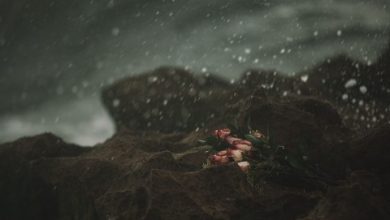‘Speech Sounds‘ is a captivating short story written by Octavia E. Butler, a renowned African-American science fiction author. The tale is set in a post-apocalyptic world where a mysterious illness has devastated human communication, rendering most people unable to speak or comprehend language. In this desolate landscape, the story follows a woman named Rye, who has lost her family to illness and struggles to survive amidst violence and chaos. Octavia E. Butler was a trailblazing figure in the world of science fiction literature. She was known for her thought-provoking explorations of race, gender, power dynamics, and human nature within fiction.
Speech Sounds | Summary
In this tense and gritty scenario, trouble breaks out on a bus traveling along Washington Boulevard. Rye, a passenger, expects some form of conflict due to the harsh circumstances of her journey. Loneliness and desperation drive her to leave her home in search of relatives. As the bus unexpectedly arrives, Rye’s perceived stroke of luck turns sour as a disagreement between two young men escalates. The two men engage in an aggressive standoff, their heated gestures hinting at a potential fight. Passengers become increasingly anxious as the tension rises. Rye watches the situation intently, anticipating that any small spark could ignite the violence she senses is imminent. Amid the bus’s jolting movement, the taller man is thrown into the shorter man, triggering the long-awaited brawl. The shorter man launches a rapid and fierce attack, pummeling his opponent into submission. Chaos erupts as other passengers react with fear and distress. Another dispute erupts among other young men, compounding the turmoil.
Frightened by the escalating violence, Rye decides to exit the bus, joining a few other passengers who do the same. In a world where buses are scarce and unpredictable, people often tolerate such chaos to secure a ride. As Rye distances herself from the bus, she remains vigilant, understanding that joining the fight might be inevitable but seeking protection in a nearby tree. Amid this turmoil, a battered blue Ford pulls up on the opposite side of the street. The driver, a young man in a Los Angeles Police Department uniform, gestures to Rye, beckoning her. Rye, however, is wary of any remnants of law enforcement, knowing that large organizations no longer exist in this new reality.
The officer removes his coat, revealing his uniform and equipment. Rye’s wariness persists, and she remains cautious. The officer throws something into the bus, releasing tear gas to quell the fighting inside. People rush out, choking and crying. Rye assists those who struggle, while the officer helps at the front of the bus. As the situation calms down, Rye realizes the value of the officer’s controlled demeanor, allowing him to navigate the tense situation without triggering further violence. Amid the chaos, the bearded man’s revolver remains in plain view, deterring the bus driver from approaching further. However, the driver’s desperation over his bus’s state continues, and he’s unable to grasp the consequences of allowing flights to ruin it. Meanwhile, the LAPD officer seeks Rye’s assistance and gestures for her to leave with him in his car. Despite the officer’s uniform, Rye remains cautious of law enforcement remnants.
Rye refuses the offer and signals him to leave, but the officer persists. Eventually, Rye is linked to the officer by an obscene gesture from one of the fighting men, insinuating a connection between them. The situation turns tense as the man advances, but Rye stands her ground, armed and ready. The man eventually gives up, and the officer’s actions show his intention not to engage in violence. Rye decides to take the risk and get into the officer’s car, reminiscing about a neighbor’s unsavory proposal after the illness ravaged the population. As they drive away, the bus driver and others throw rocks at them, but the car escapes unharmed. The officer asks Rye to choose their route, and her choice reassures her that he might be trustworthy.
Passing through a desolate landscape, the officer gives Rye a pendant—a piece of obsidian.
Rye and Obsidian share a moment of intimacy, using symbolic pins to represent their names and communicate their stories. Rye harbors resentment towards Obsidian for his literacy, a skill she has lost due to the illness. As they struggle with their emotions, Obsidian guides Rye to a street map, trying to determine her destination. Unable to communicate through words, they rely on gestures and touch. Obsidian’s willingness to help LAPD officers survive perplexes Rye, but she struggles to articulate her thoughts. Their physical interaction becomes intense, but Rye’s painful history of loss and despair prevents her from embracing a romantic connection. They later become intimate and try to find solace in each other’s company. Rye indicates the number three, alluding to her deceased children, a memory that weighs heavily on her heart.
Seeking escape from her despair, Rye engages with Obsidian again, seeking pleasure and forgetting her pain. In a poignant moment, she invites him to her home, hoping for companionship. Although he seems to hesitate, he ultimately declines her offer. As Rye and Obsidian continue their journey, Rye pins her wheat stalk symbol to Obsidian’s LAPD badge, symbolizing her acceptance of him and his role-playing. As they head back towards home, they encounter a woman being pursued by a man. Obsidian intervenes, and in the ensuing struggle, the woman fatally wounds the man with a shard of glass, while Obsidian fatally shoots the woman. However, as Obsidian attends to the wounded man, he is unexpectedly shot and killed. Rye shoots the man in self-defense, leaving her alone with three corpses.
Two young children, around three years old, emerge from a nearby house and approach the scene. The children try to wake the dead woman, and Rye becomes overwhelmed with grief and anger. Fearing the responsibility of caring for the children in a world devoid of normalcy, she decides to leave them behind. Rye initially considers leaving Obsidian’s body behind and returning to her car. However, the realization that she can’t abandon the two young children prompts her to make a decision. She understands that the children can speak and have been able to learn language, likely born after the silence-inducing disease took its toll. Rye lifts the dead woman into her car, comforting the frightened children and assuring them that they’re joining her on the journey. With compassion, she talks to the children, introducing herself as Valerie Rye, and letting them know it’s safe for them to communicate with her.
Speech Sounds | Analysis
‘Speech Sounds’ stands out as a remarkable illustration of Butler’s writing prowess. The protagonist, as she makes her way through life in a culture where efficient communication is all but extinct. She is rendered illiterate by an unidentified sickness and decides not to speak out of concern for the unfavorable and violent responses from other characters. But at the end of the story, Rye has a pivotal event where she consciously “unlearns” her silence in order to reclaim some of her lost autonomy. Science fiction, according to Kerrian Baker, provides especially rich ground for examining how feminism and racial injustice continue to be marginalized in literature. With the help of Speech Sounds, it is possible to study feminism and racism while also tackling a number of real-world prejudices maintained by the literary community.
The most prominent subject is communication which acts directly in contrast to the established tropes of the genre, supporting Butler’s denial of science fiction’s status as exclusively a male domain. Speech Sounds, a text with relatively few adventure aspects, focuses on the importance of communication and the effects of language and literacy loss on society. Such a huge departure from the patriarchal norms of the genre encourages readers to acknowledge that, despite science fiction’s continued male dominance, there is still hope for change and that marginalized authors can usher in a more inclusive era of the genre.
The bond between Butler and Rye is highlighted as they both go through the process of “unlearning not to speak” in order to break free from the oppressive expectations of their own communities while communication continues to function within the short narrative. However, when given the option to speak up and maybe alter the course of her reality or to remain silent and abandon two children to fend for themselves, Rye courageously chooses to speak up. This conversation also illustrates Butler’s decision to interact with the literary community. Butler reclaims her voice despite science fiction’s status as a male-dominated medium and the associated misogynist animosity.
Despite science fiction’s propensity for whitewashing its characters when their race is left nameless, Rye’s strong feelings about losing her ability to read and write let the reader understand and appreciate her existence as a black woman. She still has the ability to communicate verbally, but she no longer has the ability to read or write, which is difficult for her. Rye says she has no “reason to live” as a result of losing her literacy, which fueled her interest as a freelance writer and led to a career as a history professor at the University of California, Los Angeles. The frequent inability of black people to read or write is a commentary on systematic racial oppression. Rye’s increased melancholy upon discovering her illiteracy strongly suggests her existence as a black woman, undermining the American literary Empire’s claim that science fiction is exclusively the domain of white people.
Sami Schalk has suggested that it is possible to alter discussions about Butler’s writing among feminist, racial, and genre studies researchers while also promoting an increased focus on Butler among scholars of disability studies. She makes a case for Butler as a writer of disability literature based on her life experiences, her studies, and her writing by using evidence from Butler’s private files, public interviews, and publications.
Speech Sounds | Themes
The theme of communication and language is a central and pervasive element. The story takes place in a world where a mysterious illness has robbed people of their ability to communicate verbally. Rye, the protagonist, feels disconnected from others due to her inability to convey her thoughts and emotions. Rye’s internal monologue reveals her frustration at not being able to convey her grief, anger, and desires. The absence of verbal expression intensifies the characters’ emotional struggles and adds to their sense of alienation.
The story’s characters exist in a world marked by extreme isolation, brought about by the breakdown of communication, the loss of language, and the violence that ensues. The lack of language itself results in isolation most immediately. The sickness has taken away the characters’ effective communication skills. The novel takes place in a world where societal norms have crumbled. As a result of the breakdown of law and order, people are left to fend for themselves. Characters experience a greater sense of isolation as a result of this collapse in society because they can no longer rely on organizations or groups to provide them with support and security. The story’s characters also encounter emotional seclusion. For example, Rye’s reluctance to express her sadness over the death of her family has left her emotionally damaged. This emotional isolation is compounded by her interactions with others, as violence and distrust make genuine emotional connections difficult to establish.
The theme of isolation is intertwined with the theme of survival. Characters are forced to prioritize their own survival above forming connections with others. Characters become increasingly isolated as a result of this urge for self-preservation since they become cautious of outsiders and more willing to use force to defend themselves. Characters simultaneously long for camaraderie and human interaction despite the obstacles in their way of connecting. In order to deal with her loneliness and give company to the kids and herself, Rye decides to take care of the two kids. The theme seeks to emphasize the underlying human desire for companionship, connection, and communication while simultaneously highlighting the effects of their absence in a violent and hopeless world.
The theme of language and communication is also tied to the themes of hope. The presence of children who can communicate suggests that the world may not be entirely devoid of language forever. These youngsters stand for the potential for repairing and reviving interpersonal relationships through effective communication. The narrative makes a suggestion that language, even when it is lost, can be recovered and revived. The story’s characters live in a world that is characterized by violence, chaos, and a breakdown in communication. Despite the difficulties, characters manage to adapt and live, providing little glimpses of hope. These instances serve as a reminder to readers that the human spirit can endure even the most hopeless situations. The unforeseen connections that characters create with one another serve as a sign of hope.
Rye’s encounter with Obsidian and the two children showcases the potential for bonds to form even in a world where language is limited. These connections provide characters with a glimmer of hope that they are not completely alone and that they can find companionship and support. Rye’s decision to care for the two children represents a sense of hope for redemption and renewal. Through her actions, she seeks to protect and educate the children, potentially contributing to the survival of the next generation. Through moments of hope, the story suggests that even in a world fractured by loss and violence, there is room for growth, change, and the emergence of a more positive and interconnected future.
Speech Sounds | Title
The title of the story, ‘Speech Sounds,’ holds a significant and symbolic meaning that resonates with the core themes and narrative elements of the story itself. The title’s simplicity mirrors the stripped-down, grim reality of the world in the story. It encapsulates the overarching theme of communication’s fragility and the vital role it plays in human relationships and society. The absence of speech sounds not only reflects the physical and linguistic loss but also symbolizes the emotional and psychological barriers that people face in their attempts to connect with one another in a world where language has been disrupted.
Speech Sounds | Character Sketch
Rye (Valerie Rye): The protagonist of the story is Rye, a black woman who has lost a great deal as a result of the illness that renders people silent in the post-apocalyptic world. She has a background in literature and history, and she once held a teaching job at UCLA. Rye is plagued by the loss of her children, husband, and other family members. She is now bitter and alone as a result of her loss. She is drawn to Obsidian’s presence, which reflects her desire for interpersonal contact.
Obsidian: Obsidian is a significant character in the story, wearing a uniform that implies his involvement in maintaining order. Despite his inability to communicate using spoken language, Obsidian communicates through gestures and interactions. He is literate and has the ability to read and write, which evokes jealousy in Rye due to her own inability to read.
Speech Sounds | Literary Devices
The use of first-person narration offers a deeply intimate and personal perspective on the events unfolding in the post-apocalyptic world. Readers can gain immediate access to Rye’s inner thoughts, worries, and wants thanks to the first-person narration. Rye’s challenges and feelings become more relevant and compelling thanks to this subjective viewpoint, which also makes readers feel a strong sense of empathy and connection with her. Readers learn more about Rye’s character and intentions as a result of her insights and contemplation. Her internal monologues highlight her emotional struggles, her desire for human connection, and the effects of her losses. This multi-dimensional portrayal adds complexity to the story’s themes. At the same time, first-person narration also introduces an element of unreliable perception. Rye’s understanding of events is filtered through her own experiences and emotions, potentially leading to misinterpretations.
Octavia E. Butler uses imagery to depict the post-apocalyptic world, the characters’ surroundings, and their emotional states. The story paints a desolate and bleak landscape through imagery. Phrases like ’empty streets,’ ‘ruined buildings,’ and ‘boarded-up storefronts’ create a vivid mental picture of a world ravaged by an unspecified illness. Descriptions of streets ‘silent except for the rumbling of her own engine’ and a world where ‘the only sounds were the occasional voices of people too far away to see’ evoke a sense of stillness and emptiness. Imagery is used to describe the characters’ appearances and emotions. Furthermore, Rye’s ‘sick to her stomach with hatred, frustration, and jealousy’ creates an intense emotional image, allowing readers to sense the depth of her emotions. Imagery is also used to contrast the characters’ past experiences with their current reality. Rye’s memories of Los Angeles as a thriving city stand in stark contrast to the present state of ruin and decay. This contrast is achieved through imagery that highlights the changes that have occurred over time.
The use of flashbacks adds depth to the narrative by providing insights into the character’s past experiences and emotions. These flashbacks aid in drawing comparisons between the individuals’ pre-illness lifestyles and their present circumstances in the post-apocalyptic world. Throughout the narrative, Rye thinks back on her life before becoming unwell. Her memories of Los Angeles as a vibrant city with busy streets crowded with vehicles and people stand in stark contrast to the city’s current gloom and degradation. Additionally, flashbacks shed light on Rye’s own losses. The emotional toll the sickness has had on her is evident in her recollections of her spouse and children as well as her life as a teacher and writer. The flashbacks show the depth of her sorrow and her quest for meaning in her life. The juxtaposition of scenes from the past with the present world amplifies the sense of loss, hopelessness, and despair. This technique allows readers to witness the dramatic shift in the characters’ lives.
‘Speech Sounds‘ showcases Butler’s ability to craft compelling narratives that delve into the complexities of human behavior and societal structures. Her unique voice and storytelling style have left a lasting impact on the genre, making her an iconic figure in both science fiction and literature as a whole.



